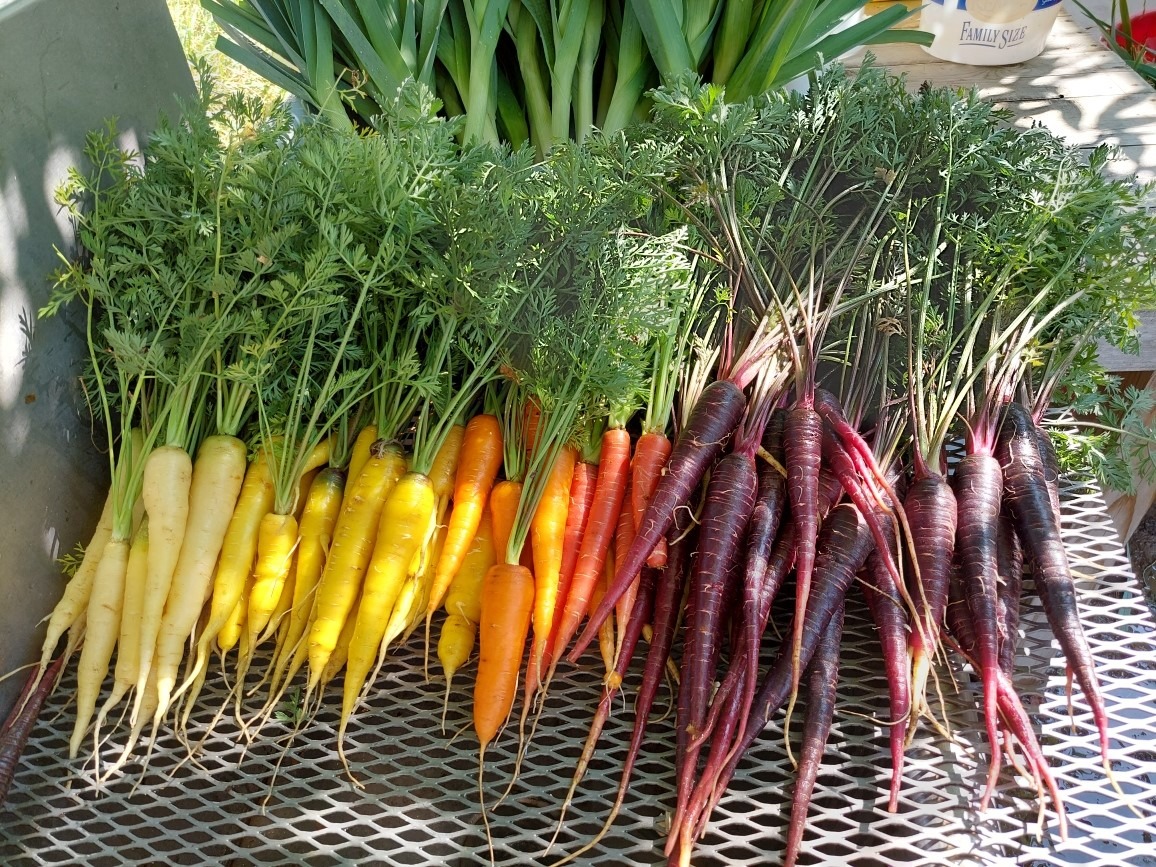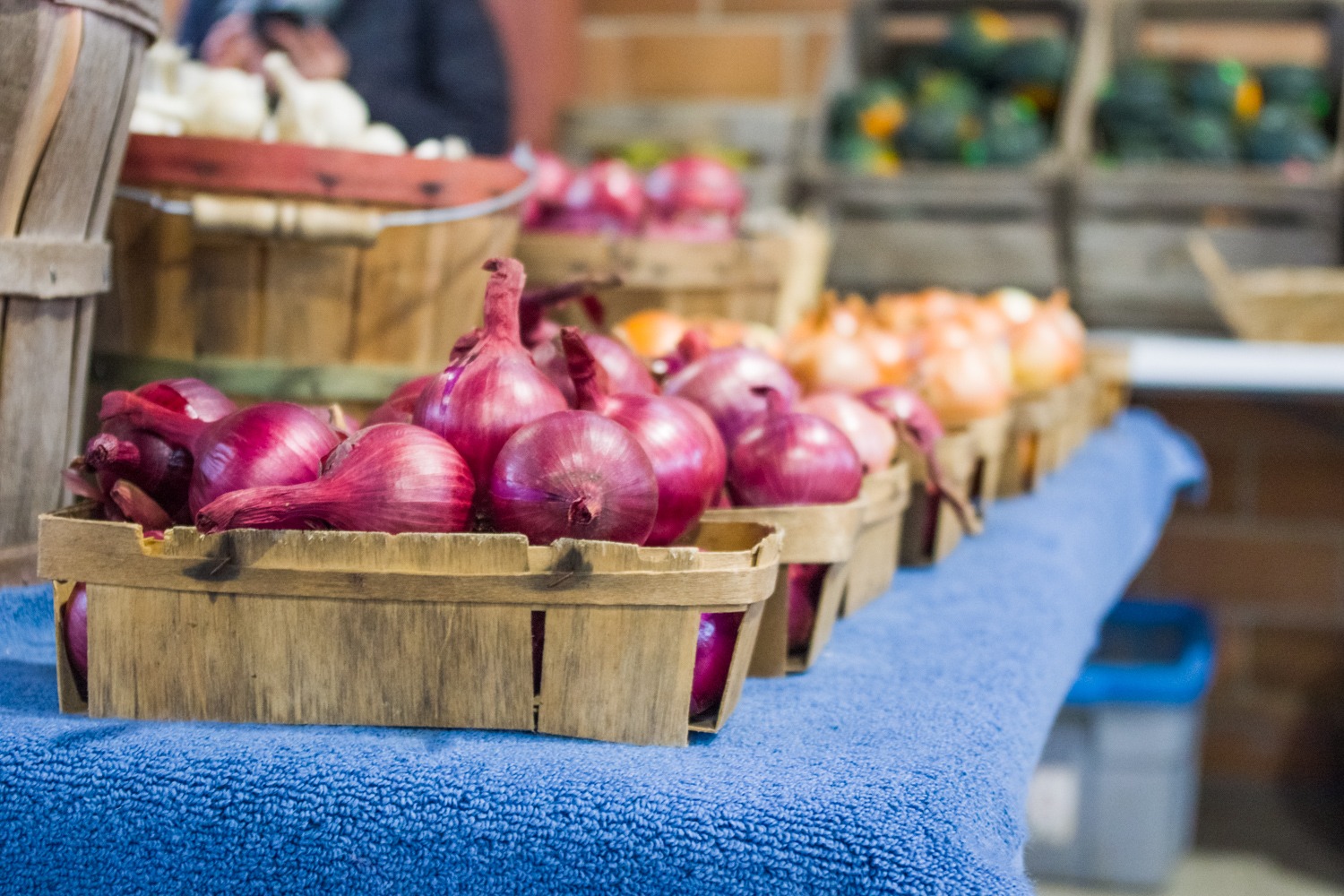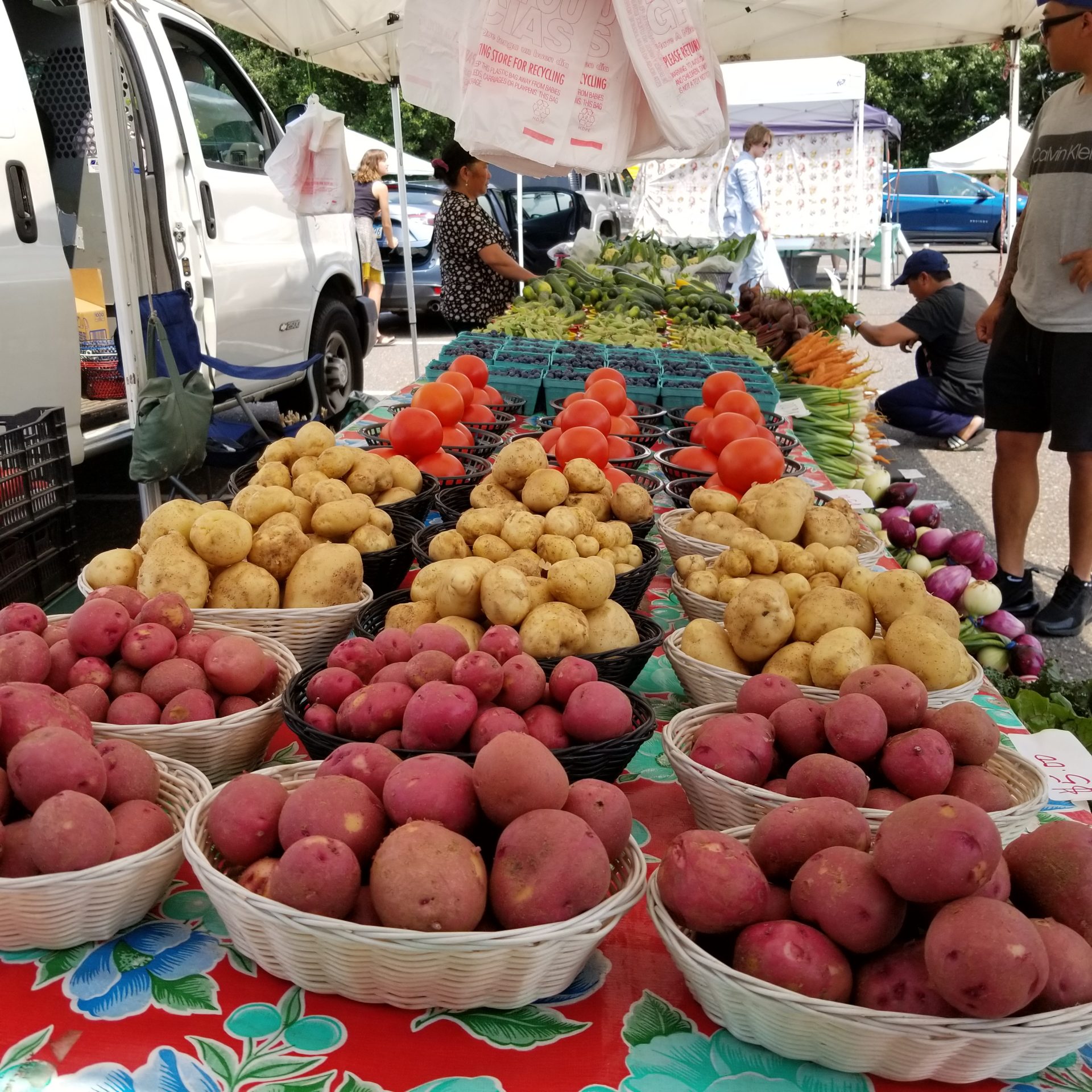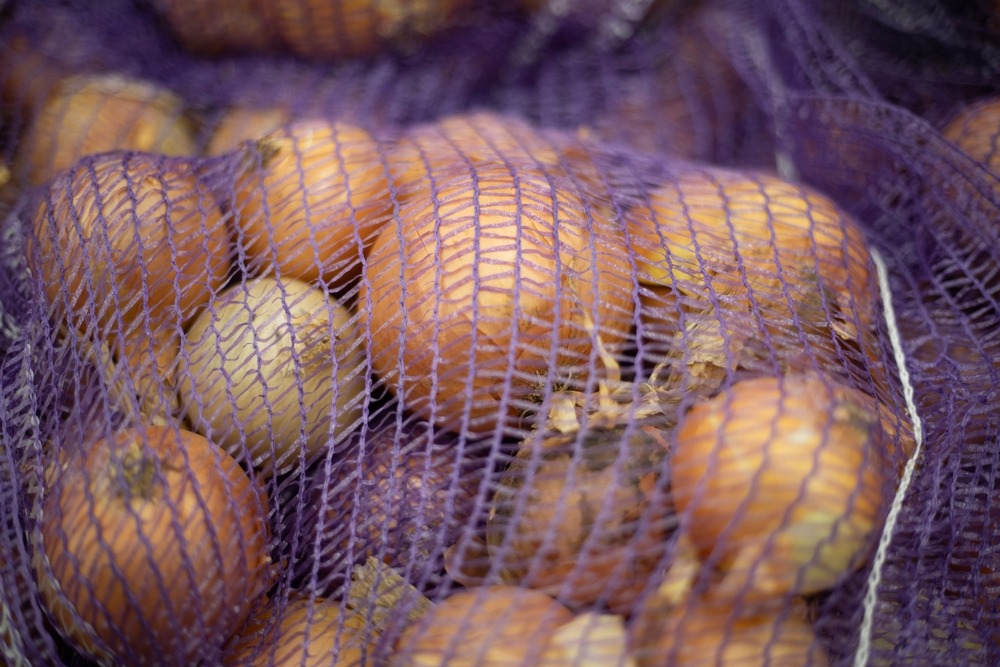
Imagine biting into a crisp, Minnesota Grown apple on New Year’s Day or savoring homecooked soup brimming with sweet local squash in the middle of a February freeze – these are the joys of long-term produce storage!
As the leaves and temperatures drop, Minnesota farmers are busy harvesting, keeping fall farmers’ markets and farm stands bursting with seasonal produce like apples, squash, onions, and potatoes. It’s the perfect time to stock your pantries and crisper drawers with locally grown goods!
But how many apples should you buy? How long will those potatoes keep? And how do you keep them all fresh? We’ve got you covered! With the right techniques, your fall haul can last well into winter, allowing you enjoy Minnesota Grown fruits and vegetables, Fresh From Your Neighbors, for many months to come.
Discover how long some of Minnesota’s fall staples will keep, learn some quick tips for keeping them fresh, and then find a farmers’ market or farm stand near you to stock up!
Table of Contents
General Storage Tips
Storage Tips by Product
General Storage Tips for Minnesota’s Fall Finds
Before we dig into the product-specific details, review some general tips for keeping your harvest fresh and tasty for months.
Refrigerator Storage
Tip 1: Wait to wash your fruits and veggies until just before use
Produce is sensitive to water. The outer skin of fruits and vegetables protects them, but moisture can weaken this protective layer, allowing bacteria to grow. Washing adds excess water to the equation, which can hasten this process and cause mold to set in prematurely, too.
So as tempting as it may be to wash those potatoes as soon as you get them home, wait to wash fruits and veggies until just before you use it! This will help stave off wilting and prolong freshness.
Tip 2: Use crisper drawer settings to create the right humidity conditions to keep your fall haul – well, crisper, longer
Crisper drawers are your secret weapons for keeping local produce fresher, longer! These special drawers control humidity by adjusting airflow. Different fall products have different preferred humidity levels, so we suggest setting one drawer to “high” (closed vents) and the other to “moderate” or “low” (more open vents). The high humidity setting traps more moisture inside by reducing airflow while the low humidity setting allows more airflow, creating a drier storage space. Which local products should go in which drawer? Check the product-specific sections below for the full details!
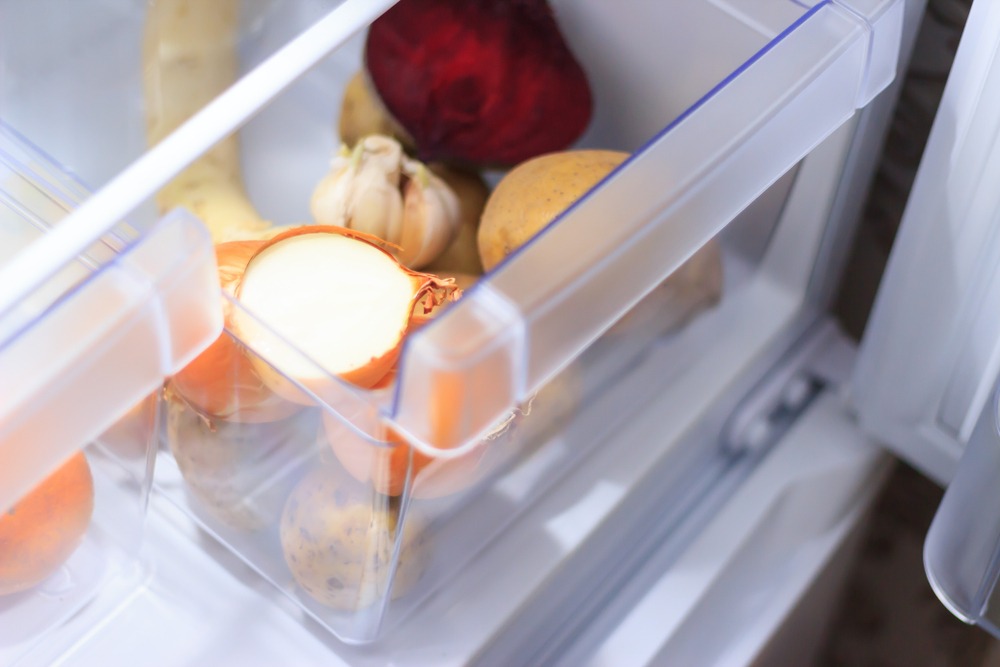
Basement Storage
If your basement tends to be cool and dry in the fall and winter months, it can be an ideal spot for storing Minnesota fall favorites like garlic, onions, and winter squash. These Minnesota crops prefer dark, cool, dry conditions with good airflow – like many Minnesota basements in winter. Find an inside nook away from outer windows and moisture sources and either hang products in wide mesh bags (quick tip: clean/unused pantyhose work great--tie a knot between each onion to maintain airflow) or stack in open crates with plenty of room to breathe.
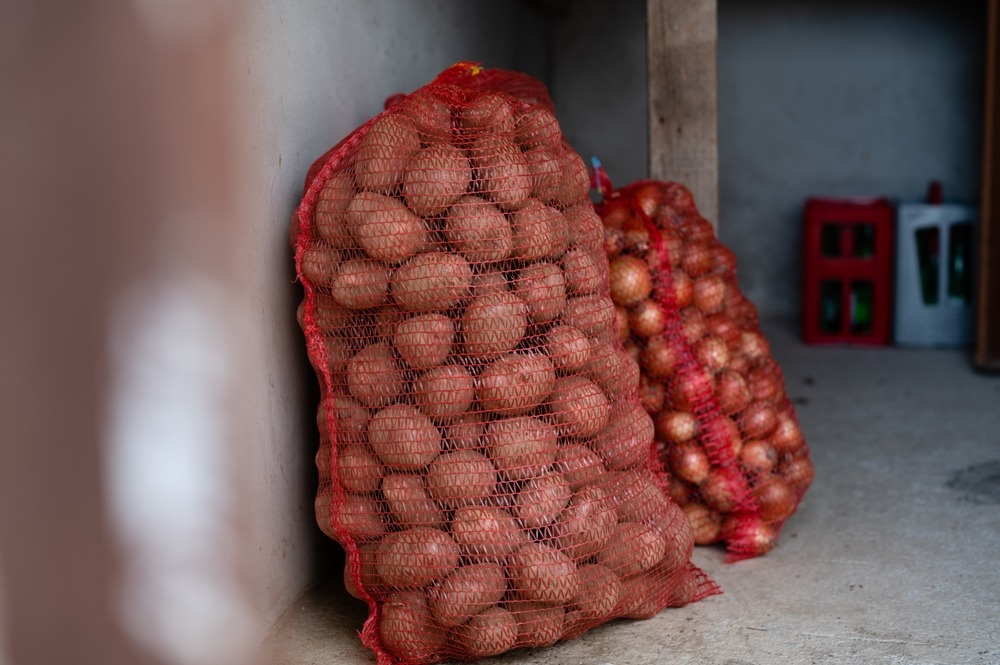
What About Curing?
Some of Minnesota’s fall favorites, including potatoes, garlic, onions, and squash, stay fresh longer when they’re cured before storage. Curing is a simple process done shortly after harvesting – often done by the farmers before putting items on the farm stand. After being harvested, vegetables are left out in sunny, dry weather for about a week. If the weather doesn’t cooperate, the process can also be done indoors under the right conditions. This process allows the necks and outer skins to dry and toughen up, which helps extend storage life. The next time you purchase vegetables from your local farmer, feel free to ask if they’ve been cured!
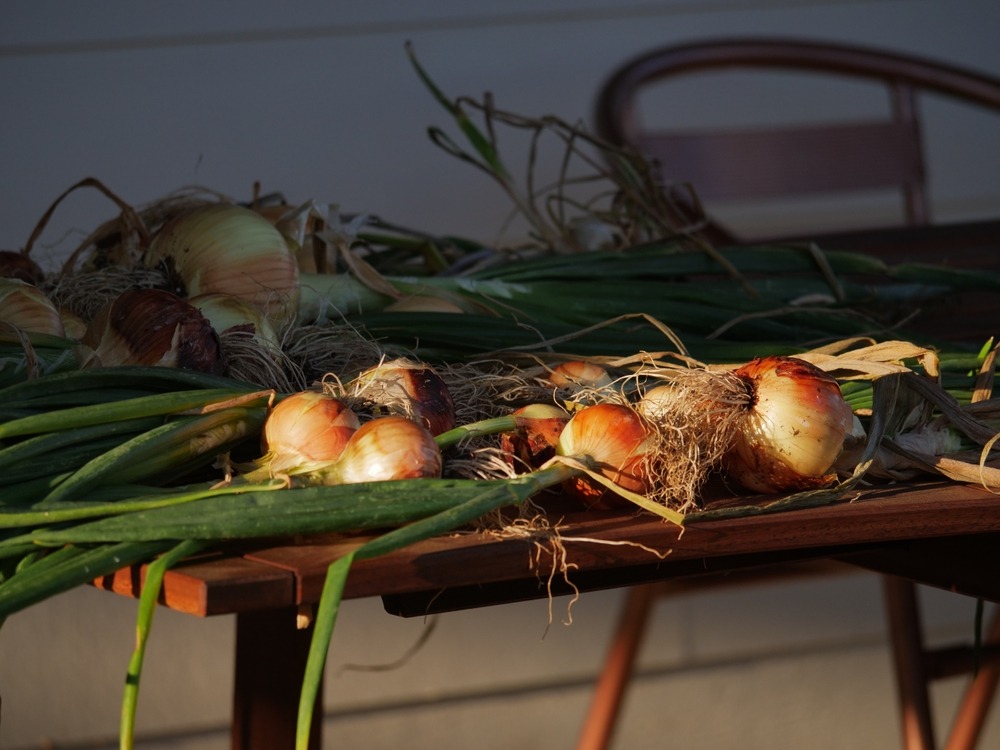
Shelf Life and Storage Tips by Product
Now let’s dive into the specific tips for storing some of Minnesota’s favorite fall fruits and veggies! Luckily, fall harvests cover some of the essentials you’ll want to keep on hand as the weather cools.
Many fall crops can stay fresh in the fridge or basement for months, so late September into October and even November are great times to stock up so you can savor the locally-grown products even after the snow flies.
Apples
Shelf life with proper storage: up to seven months, depending on variety
Ideal storage conditions: cold and humid
If there’s one fruit Minnesota’s known for, it’s apples! As apple enthusiasts, we simply can’t help ourselves but to stock up on apples from our favorite local orchards each fall. And the great news is – some varieties of apples will keep for up to seven months – blessing us with the taste of local fruit through even the coldest of months.
Minnesota apples store best in cold (~32 degrees), high humidity conditions. Keep your apples in a paper bag in the high-humidity drawer in your fridge. You can even wrap each apple individually in paper before storing. If one apple starts to go soft, the paper wrapping will prevent it from affecting the rest of your stash.
As with squash, some varieties store better than others. The storage length can range from a few weeks to seven months, depending on the variety!
Early Season Varieties (typically picked late August-early September)
- Rave/First Kiss: This bright red apple variety is known for its juicy, tart flavor. It typically ripens in mid- to late August and can stay fresh for up to five months.
- Zestar!: This apple is big in both flavor and size. It usually ripens in late August to early September and can be stored for up to 8 weeks.
Mid-Season Varieties (typically picked mid-to late-September)
- Sweet Sixteen: This variety is known for its similarity to the taste of sugar cane or cherry candy. It ripens around mid- to late September and can last up to eight weeks in storage.
- Honeycrisp: A Minnesota favorite, Honeycrisp apples ripen in late September and can last up to seven months if stored correctly. Their crunchiness and juiciness make the perfect winter snack!
Late Season Varieties (typically picked late September through October)
- Honeygold: This brilliant yellow and green apple has a sweet taste with notes of pear. It usually ripens in late September and can stay fresh for up to three months.
- Haralson: Another fan favorite, Haralson apples ripen from late September to early October. They can last up to five months, and they’re great for making apples pies!
- Keepsake: Known for its hard and crisp texture, Keepsake is one of the last varieties to ripen, typically ready for picking around mid-October. It can store up to six months in ideal conditions.
Applesauce Recipe
If your apples start to get a bit soft, don’t fret! Try cooking to put them to good use. Applesauce is a classic snack that’s easy to make, and a perfect use of apples that are a little less crisp than you prefer for fresh eating.
Ingredients:
- 7 apples
- ¼ cup sugar
- ½ cup water
- Optional: ½-1 teaspoon cinnamon, to taste
Directions:
- Wash apples, then peel, core, and quarter or slice them.
- Combine all ingredients except cinnamon in a saucepan or stock pot.
- Bring to a boil, then reduce heat to low as soon as water boils.
- Simmer over low heat for about 30 minutes, stirring and mashing until apples are tender.
- Mash or blend with an immersion blender to your desired consistency. Add cinnamon if desired.
- Keep in an airtight container in the refrigerator for up to a week or in the freezer for up to six months.
Find juicy local apples near you in the Minnesota Grown directory!
Carrots
Shelf life with proper storage: up to eight months
Ideal storage conditions: cold and humid
Carrots are a winter classic. They store well in cold and humid spots. For best results, tuck your carrots into a perforated plastic bag to trap the humidity, and store in a high-humidity crisper drawer in the fridge. If your carrots still have their green tops, cut them off close to the base as soon as possible after buying, leaving the base intact. When stored in ideal conditions, carrots can stay fresh for up to eight months.
Garlic
Shelf life with proper storage: up to six months
Ideal storage conditions: cool and dry
Minnesota farms grow a plethora of garlic varieties to keep your winter dishes bursting with local spice. There are two main categories of garlic varieties: hardneck and softneck. Softneck garlic is most commonly found in grocery stores due to its long shelf life and mild flavor. Hardneck varieties, however, have more complex flavors with intriguing subtleties reflecting where they were grown—so bulbs grown on one farm may taste slightly different than bulbs of the same variety grown on another farm, due to the unique soil makeup and other growing conditions! When you’re on the hunt for garlic, be sure to ask the farmer which varieties they offer and be prepared for fun garlic facts.
Garlic can be stored in two main ways:
- At room temperature (68-85 degrees): Stored in whole bulbs, in their skins, and in a dry spot with good air flow on the kitchen counter or pantry, garlic can stay fresh for up to two months.
- At cooler temperatures (~60 degrees): For longer storage, keep those same whole bulbs in a mesh bag (or again – unused pantyhose works great in a pinch) in a cool, dry, dark spot like the basement, with plenty of airflow. Garlic can stay fresh stored like this for up to six months.
If your garlic begins to shrivel or sprout, it’s still safe to eat, but it’s no longer at peak quality. Like onions, garlic lasts longer if cured before storage, so don’t hesitate to ask your farmer if they’ve cured it before you buy!
Find a local garlic grower near you in the Minnesota Grown Directory!
Onions
Shelf life with proper storage: up to four months
Ideal storage conditions: cold and dry
Onions are a kitchen staple many of us simply can’t go without! Locally grown onions can last months with proper storage. Keep them whole with the peel on in the low-humidity crisper drawer of your fridge for maximum storage length. Cured onions with peels on will last longer.
If your crisper drawer is overflowing, cured onions with peels on also love a good dry, cool basement spot. Hang in mesh bags or clean pantyhose in a dark spot with plenty of air flow.
If you notice green shoots sprouting from your onions, don’t worry! Both the onion and the green shoots are safe to eat. You can cut the green sprouts and use them like green onions.
Find an onion farmer near you in the Minnesota Grown Directory!

Parsnips and Turnips
Shelf life with proper storage: up to four months
Ideal storage conditions: cold and humid
Just like carrots, this duo of root vegetables are stored best in a perforated plastic bag in the fridge (in a high humidity crisper drawer if you have space), with all green tops removed. Remember, only the greens need to go, so don’t chop off the tops of the veggies!
Potatoes
Shelf life with proper storage: up to six months, but also – it’s complicated
Ideal storage conditions: cool and moist, but again – it’s complicated
Potatoes are a versatile vegetable that make hearty sides and filling soups, perfect for those chilly days! To keep your spuds fresh, you want to ideally store them in a cool, dark, and humid place. A root cellar is the ideal storage option, but we know that not everyone has one of those out back. Thus, you can also opt for the fridge or your basement, though here’s where it gets complicated – each comes with drawbacks and tradeoffs. Check them out below and choose your own potato storage adventure based on your planned usage and storage spaces available.
For fridge storage, place your potatoes in a dark, perforated plastic bag in a high-humidity drawer. They will keep for a relatively long period of time this way, but keep in mind that they may turn green and slightly sweeter over time (a process called “cold sweetening”), making them less ideal for uses like frying. They’re still edible, but their flavor and texture will change some, and they might darken when fried.
For basement storage, use a mesh bag and tuck them away in a dark spot. Basements can be warmer and drier than what’s ideal, making it more likely for your potatoes to sprout or shrivel, shortening their lifespan, but avoiding some of the flavor and textural changes that happen in the fridge.
If you spot some sprouts in storage, no worries—they are still safe to eat! Just trim the sprouts before you cook. Just like onions and garlic, potatoes store best after curing, which is often done by the farmer before sale.
Find your local potato purveyor in the Minnesota Grown directory!
Winter Squash
Shelf life with proper storage: two to six months, depending on variety
Ideal storage conditions: cool and dry
Squash is a must-have fall flavor, and Minnesota farmers have plenty of varieties on offer. Winter squash stores incredibly well, so be sure to get yourself a healthy stash from your next trip to the farmstand or farmers’ market for enjoyment in warm, comforting dishes all winter long!
For best storage, keep winter squash in a cool, dry, dark spot like the basement. To maximize freshness, leave them unwrapped to promote airflow. The storage life of squash can greatly vary depending on the variety. Here’s a breakdown of the average storage span by variety:
- Acorn: up to two months
- Buttercup: up to three months
- Butternut: up to three months
- Delicata: up to three months
- Hubbard: up to six months
- Kabocha: up to four months
- Pumpkin: up to three months
- Spaghetti: up to two months
Find your winter squash farmer in the Minnesota Grown directory!
Conclusion
Fall is a great time to support local farmers and buy stock up on fresh fruits and vegetables. By shopping in bulk at farmers’ markets or farm stands and storing your food the right way, you can enjoy the taste of fall even on the darkest of mid-winter nights. From crunchy apples to hearty squash, you'll keep your pantry full, your meals tasty, and support your local farming community while you’re at it. Find fresh produce near you in the Minnesota Grown directory and start stocking up!



